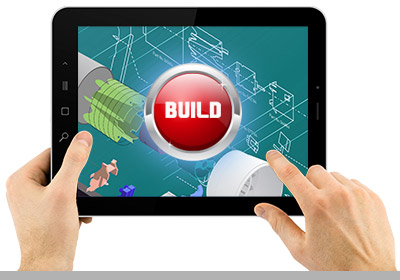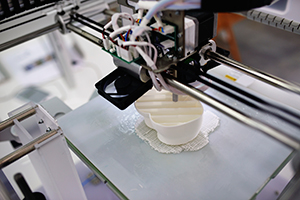
One-Click Manufacturing: Could It Really Be That Easy?
One click manufacturing (OCM) is a concept that arose from the 3D printing world: design a 3D model of a part, upload it to an OCM company like Shapeways or Ponoko, click “build,” and wait for the physical object to be delivered to your door. Now, OCM is making inroads into the more traditional electronic manufacturing and assembly world. This trend, combined with the rise of startups building IoT devices, has far-reaching implications for the electronic component supply chain.
One huge advantage to OCM is speed. If you need a few units built for prototyping and you need them fast, just upload a PCB design and bill of materials (BOM) to a service like Tempo Automation or CircuitHub. They will immediately provide you with a quotation based on third-party APIs for both up-to-date component pricing and availability data, as well as for PCB manufacturing and electronic manufacturing services (EMS) in the U.S. and abroad. No human intervention is involved in the quotation process and, in some cases, you can get assembled boards on your doorstep in as few as three days.
This is, of course, a simplified explanation of the OCM process and enabling technology; but the key takeaway is that OCM can provide a significant time-to-market advantage, particularly for hardware startups competing against large, entrenched players.
In some cases, you can get assembled boards on your doorstep in as few as three days.
 Using web-based tools such as OCM is especially appealing to hardware startups whose employees skew younger and tend to be more comfortable with self-service tools. They are used to using Web services to order dinner, book plane tickets and shop for personal electronics. Using the Web to buy assembled circuit boards fits in well with their worldview, whereas submitting RFQs via email and negotiating with contract manufacturers and component distributors over the phone does not.
Using web-based tools such as OCM is especially appealing to hardware startups whose employees skew younger and tend to be more comfortable with self-service tools. They are used to using Web services to order dinner, book plane tickets and shop for personal electronics. Using the Web to buy assembled circuit boards fits in well with their worldview, whereas submitting RFQs via email and negotiating with contract manufacturers and component distributors over the phone does not.
Today, one click manufacturing is generally confined to small-quantity production. While large volumes can be produced, it is not possible to do the hard legwork of negotiating the best price on a component-by-component basis through these web applications. This will likely change in the future as the influence of OCM companies increase and they develop ways to negotiate large component buys programmatically.
OCM is bound to the existing supply chain forces that all purchasers must contend with: getting the parts to the production line on time. For OCM to leverage their biggest advantage, speed, the submitted BOM must contain only parts that are easily sourced through the existing supply chain. Since many of the designs submitted through OCM are in the IoT space, demand is focused around a few hundred components, many of which are kept in stock by EMS facilities to drive down the time from click to ship. OCM firms like Tempo Automation have joined forces with Octopart to create the Common Parts Library, a list of commonly available components for IoT and connected-device applications. CircuitHub is also developing their own library of commonly used parts to help designers focus their designs on easily sourced parts.
Ultimately, focusing demand on components in the Common Parts Library or other similar libraries will lead to faster product development, economies of scale and greater supply chain visibility for both design engineers and the EMS firms that fulfill their BOMs and manufacture their products.
Related Resources:
- MakerCon Panel Discussion: 2015 Electronic Hardware Development and Manufacturing Trends
- Podcast: 3D opportunity for the supply chain: Additive manufacturing delivers
- Report: 3D Opportunity Primer
- SlideShare: Rise of the Maker Movement
- Initiative: iManufacturing Hub